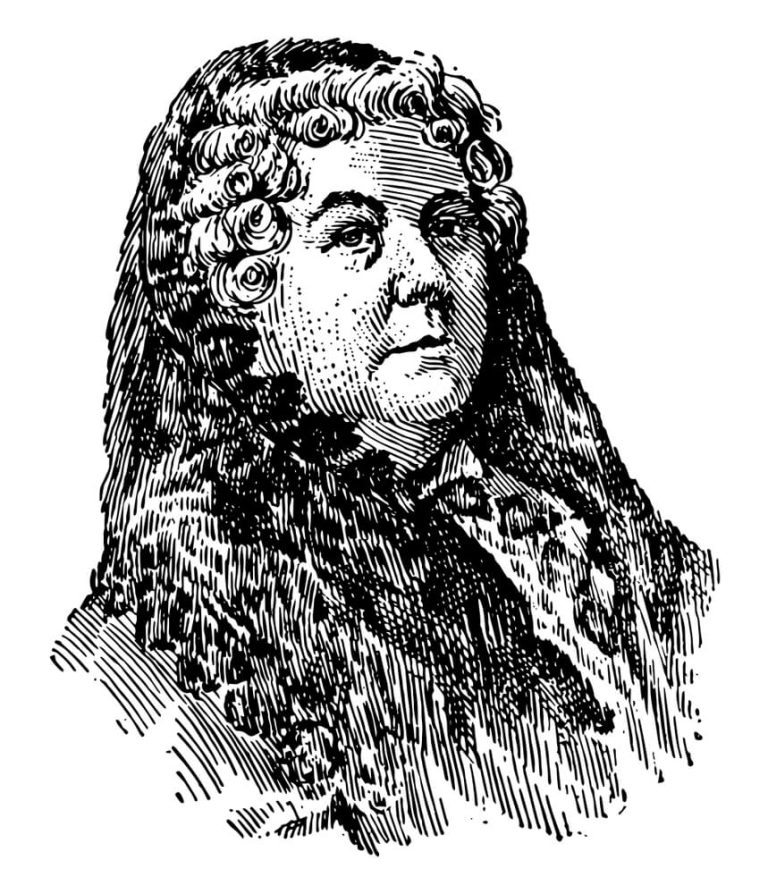Elizabeth Cady Stanton is a key figure in the women’s rights movement, known for her advocacy and contributions to social reform. As a suffragist and activist, she was dedicated to gender equality. From her early influences to her pivotal role at the 1848 Seneca Falls Convention, Stanton pursued change relentlessly. Her collaboration with Susan B. Anthony solidified their legacy as leaders of women’s suffrage. This biography explores Stanton’s life, achievements, and lasting impact on history for women everywhere.
Who was Elizabeth Cady Stanton?
Elizabeth Cady Stanton was a pioneering American suffragist and women’s rights activist whose work laid the groundwork for the women’s movement in the United States. Born on November 12, 1815, in Johnstown, New York, Stanton’s early life was marked by an education that was rare for women of her time. She attended Johnstown Academy and later went on to study at Emma Willard’s Troy Female Seminary.
Stanton’s passion for social reform was deeply influenced by her upbringing; her father, Daniel Cady, was a prominent lawyer and judge who exposed her to legal discussions from a young age. This early exposure to law and justice issues fueled her lifelong commitment to advocating for women’s rights.
As an adult, Elizabeth Cady Stanton emerged as a leading figure in the suffrage movement. She is perhaps best known for organizing the Seneca Falls Convention in 1848 alongside Lucretia Mott. This seminal event marked the first women’s rights convention in America and resulted in the Declaration of Sentiments, which boldly asserted that “all men and women are created equal.”
Throughout her life, Stanton continued to champion various causes related to gender equality. Her efforts extended beyond suffrage; she also advocated for more progressive divorce laws and access to higher education for women. Her collaborations with other notable activists like Susan B. Anthony helped propel these issues into national discourse.
Elizabeth Cady Stanton’s biography is not just a story of advocacy but also one of resilience and vision. Her legacy endures as an inspiration to those continuing the fight for equality today.
The Early Life and Education of Elizabeth Cady Stanton

Elizabeth Cady Stanton’s early life and education played a pivotal role in shaping her into one of the most influential figures in the women’s rights movement. Born on November 12, 1815, in Johnstown, New York, Elizabeth was the eighth of eleven children in a family that valued education and intellectual pursuits. Her father, Daniel Cady, was a prominent lawyer and judge who greatly influenced her formative years by encouraging her to engage with legal texts and debates.
Despite living in an era when formal education for girls was limited, Elizabeth’s thirst for knowledge led her to attend Johnstown Academy. She excelled in subjects typically reserved for boys at the time, such as Latin and mathematics. This educational background not only equipped her with critical thinking skills but also instilled a sense of confidence that would later fuel her advocacy work.
Family influence played a significant role during Elizabeth’s childhood. Her mother, Margaret Livingston Cady, came from a line of Revolutionary War heroes which imbued Elizabeth with a strong sense of justice and equality. Furthermore, witnessing the legal disadvantages faced by women firsthand through her father’s law practice ignited her passion for reform.
These formative years were crucial as they laid the groundwork for Elizabeth Cady Stanton’s future endeavors as an activist and leader. Her unique upbringing combined with an exceptional education allowed her to challenge societal norms and advocate tirelessly for women’s rights throughout her lifetime.
The Seneca Falls Convention (A Turning Point in Stanton’s Career)
The Seneca Falls Convention of 1848 stands as a pivotal moment in the history of the women’s rights movement and marked a significant turning point in Elizabeth Cady Stanton’s career. Organized by Stanton and Lucretia Mott, this groundbreaking convention was the first of its kind to focus explicitly on advocating for women’s rights. Held in Seneca Falls, New York, it attracted over 300 attendees, both women and men, eager to discuss the social, civil, and religious conditions and rights of women.
At the heart of the convention was the Declaration of Sentiments, a document largely authored by Stanton herself. Modeled after the Declaration of Independence, it boldly asserted that “all men and women are created equal” and listed grievances regarding women’s lack of legal rights. The declaration called for various reforms aimed at improving women’s status in society (most notably demanding voting rights for women).
The Seneca Falls Convention is often cited as a catalyst for subsequent gatherings focused on women’s suffrage and equality. It laid foundational principles that would fuel future activism within the burgeoning women’s rights movement. For Stanton, this event not only amplified her voice as an advocate but also solidified her role as a leading figure in what would become decades-long efforts toward achieving gender equality.
Collaboration with Susan B. Anthony (A Powerful Partnership)
The partnership between Susan B. Anthony and Elizabeth Cady Stanton stands as a cornerstone of the women’s suffrage movement in the United States. Their collaboration was not only a driving force behind the push for women’s voting rights but also an inspiring example of how shared vision and mutual support can lead to monumental change.
Susan B. Anthony, renowned for her unwavering dedication to social reform, found an ideal partner in Elizabeth Cady Stanton, whose intellectual prowess and strategic thinking complemented Anthony’s organizational skills and oratory talent. Together, they formed a dynamic duo that spearheaded numerous campaigns advocating for women’s rights.
Their friendship transcended mere professional collaboration; it was rooted in deep mutual respect and shared values. This powerful partnership enabled them to tackle societal norms head-on, challenging existing paradigms through speeches, writings, and relentless advocacy efforts.
By working closely together, Anthony and Stanton were able to amplify their impact significantly more than they could have individually. They co-founded organizations such as the National Woman Suffrage Association (NWSA) which played a pivotal role in advancing their cause across the nation.
The legacy of Susan B. Anthony’s partnership with Elizabeth Cady Stanton serves as a testament to what can be achieved when leaders unite under a common goal, paving the way for future generations of activists committed to equality and justice.
Major Contributions to Women’s Rights and Social Reforms
Elizabeth Cady Stanton stands as a monumental figure in the history of women’s rights and social reforms, her contributions leaving an indelible mark on society. As a passionate women’s rights advocate, Stanton’s achievements were pivotal in the fight for gender equality. She played a crucial role in organizing the first Women’s Rights Convention in 1848, held in Seneca Falls. This historic event marked the beginning of a formalized movement for women’s suffrage, with Stanton authoring the Declaration of Sentiments, which boldly called for equal rights for women.
Beyond her advocacy for women’s suffrage, Stanton was also deeply involved in broader social reforms. Her commitment to abolitionism was unwavering; she worked alongside prominent abolitionists to end slavery and promote racial equality. Her involvement with abolitionism not only highlighted her dedication to human rights but also underscored her belief that all forms of oppression were interconnected.
Stanton’s contributions extended to various aspects of social reform, including education and property rights for women. She tirelessly campaigned against laws that disenfranchised women and sought to improve their legal standing within society. By challenging societal norms and advocating for comprehensive changes, Elizabeth Cady Stanton laid down foundational work that would inspire future generations to continue striving towards equality and justice for all.
The Later Years and Legacy of Elizabeth Cady Stanton
In the later years of Elizabeth Cady Stanton’s life, her dedication to women’s rights remained unwavering. Despite facing societal resistance and personal challenges, Stanton continued to advocate for gender equality and social reform. Her end-of-life achievements were marked by a relentless pursuit of justice, including co-authoring “The Woman’s Bible,” which challenged traditional religious narratives that she believed oppressed women.
Stanton’s legacy is profoundly impactful, as her work laid the groundwork for future generations of activists who would continue the fight for women’s rights. Her efforts in organizing the first women’s rights convention at Seneca Falls and her role in founding the National Woman Suffrage Association solidified her place as a pivotal figure in history. The progress she championed not only advanced the cause during her lifetime but also inspired countless individuals to push for further reforms.
Elizabeth Cady Stanton’s impact on future generations is evident in the ongoing struggle for equality and justice that continues today. Her visionary leadership and fearless advocacy have left an indelible mark on society, encouraging new waves of feminists to build upon her foundation and strive toward achieving true gender equality.
Remembering Elizabeth Cady Stanton as a Catalyst for Change in Women’s Rights History
Elizabeth Cady Stanton’s legacy as a pivotal figure in women’s rights history remains profoundly influential. Her tireless advocacy for gender equality laid the groundwork for significant societal changes, particularly in the fight for women’s suffrage. As a co-organizer of the Seneca Falls Convention in 1848, Stanton helped draft the Declaration of Sentiments, which boldly asserted women’s right to vote and called for equal treatment under the law.
Stanton’s work extended beyond suffrage; she championed issues such as property rights, divorce reform, and educational opportunities for women. Her partnership with Susan B. Anthony was instrumental in advancing these causes, as together they formed organizations that campaigned relentlessly for women’s rights.
In remembering Elizabeth Cady Stanton, we recognize her role not only as an activist but also as a catalyst who inspired future generations to continue the fight for equality. Her contributions remind us that progress is often achieved through persistent effort and unwavering dedication to justice. As we reflect on her impact, we are encouraged to carry forward her vision of a more equitable society where all individuals have the opportunity to thrive without discrimination or limitation based on gender.


